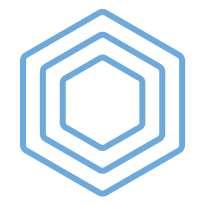Get access to all lessons in this course.
- Welcome to Fundamentals of R
- Update Everything
- Start a New Project
-
Data Wrangling and Analysis
- The Tidyverse
- Pipes
- select()
- mutate()
- filter()
- summarize()
- group_by() and summarize()
- arrange()
- Create a New Data Frame
- Bring it All Together (Data Wrangling)
-
Data Visualization
- The Grammar of Graphics
- Scatterplots
- Histograms
- Bar Charts
- Setting color and fill Aesthetic Properties
- Setting color and fill Scales
- Setting x and y Scales
- Adding Text to Plots
- Plot Labels
- Themes
- Facets
- Save Plots
- Bring it All Together (Data Visualization)
-
Quarto
- Quarto Overview
- YAML
- Text
- Code Chunks
- Tips for Working with Quarto
- Bring It All Together (Quarto)
-
Wrapping Up
- An Important Workflow Tip
Fundamentals of R
Scatterplots
This lesson is locked
This lesson is called Scatterplots, part of the Fundamentals of R course. This lesson is called Scatterplots, part of the Fundamentals of R course.
If the video is not playing correctly, you can watch it in a new window
Transcript
Click on the transcript to go to that point in the video. Please note that transcripts are auto generated and may contain minor inaccuracies.
Your Turn
Complete the scatterplot sections of the data-visualization-exercises.Rmd file.
Learn More
Scatterplot Resources
Claus Wilke talks about scatterplots in Chapter 12 of his book Fundamentals of Data Visualization. Michael Toth also has a long blog post about all of the ins and outs of making scatterplots in ggplot.
You can also find examples of code to make scatterplots on the Data to Viz website , the R Graph Gallery website , and in Chapter 5 of the R Graphics Cookbook.

You need to be signed-in to comment on this post. Login.
Jeff Shandling
April 5, 2021
Getting the following error: Error in loadNamespace(name) : there is no package called ‘farver’ when I add the mapping code, the variables are not auto-populating
Abby Isaacson
April 6, 2021
We may not be there yet, but for axis labeling if we wanted to add units to the labels, is that easy?
Jimmy Frickey
April 26, 2021
Hi David,
Here are 2 versions of code that both produce the scatterplot of height vs weight from nhanes dataset. The first is from your solutions, and the second if following r4ds text. Can you briefly comment on why they both "work"? Is one better than another?
ggplot(data = nhanes, mapping = aes(x = weight, y = height)) + geom_point()
ggplot(data = nhanes) + geom_point(mapping = aes(x = weight, y = height))
Juan Clavijo
October 11, 2021
You mentioned that ggplot will automatically remove observations with missing data. If I'm plotting average test scores for mid-term and final exams, for example, and one student took the final but did not take the mid-term, will ggplot remove that student's data from the graph completely, or will it just plot the final exam and omit the mid-term score that does not exist?
Esther Okoye
April 5, 2022
Hello, Please i cant the data visualization exercise on my studio, do i have to do anything?
Elijah Phillips
October 13, 2022
Where do we get the .rmd file for this?
Ellen Wilson
November 1, 2022
It seems like the clean_names function didn't work for me--when I start typing the code for the scatterplot, it isn't suggesting the variable names. This is what I put for clean_names
And then I got this message (which looks different from what you got)
Rows: 10000 Columns: 22── Column specification ────────────────────────────────────────────────────────────────────────────── Delimiter: "," chr (13): SurveyYr, Gender, AgeDecade, Race1, Education, MaritalStatus, HHIncome, HomeOwn, Work, H... dbl (9): ID, Age, Weight, Height, BMI, DaysPhysHlthBad, DaysMentHlthBad, SleepHrsNight, PhysActiv... ℹ Use
spec()to retrieve the full column specification for this data. ℹ Specify the column types or setshow_col_types = FALSEto quiet this message.Oscar Tetteh
March 28, 2023
Please could you email me the nhames data set? This is my mail: bismarktetteh25@gmail.com